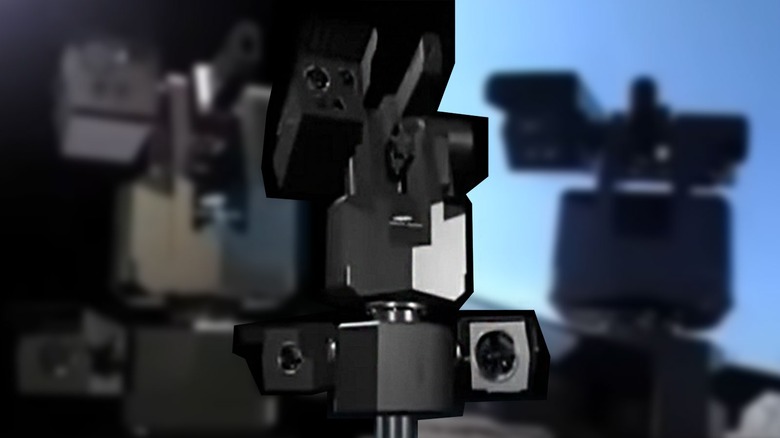Everything We Know About Samsung's Machine Gun Robots
Samsung is a brand best known for its work with electronics and home appliances, from smart refrigerators to Galaxy smartphones. But did you know that the brand was also attached to at least one autonomous sentry robot manufactured for the South Korean military? This robot's name was SGR-A1, and its creation was the work of the Samsung subsidiary called Samsung Techwin.
It's important to note that Samsung Techwin no longer exists, as the company was acquired by Hanwa Group in 2014 and was transformed into what's now called Hanwa Techwin. Before this transition took place, however, Samsung's subsidiary brand was responsible for the creation of a machine gun robot that sat sentry (and may still sit sentry) on South Korea's border with North Korea.
Samsung Techwin developed the robot jointly with Korea University, and according to Stripes, units were deployed as early as 2010 to the demilitarized zone (DMZ) that splits the Korean peninsula. This region was created at the end of the Korean War in 1953 and runs approximately 150 miles along the 38th parallel, a region that also acts as the literal demarcation line between the two countries.
The autonomous question
The SGR-A1 was deployed on South Korea's side of the border as an all-weather autonomous sentry. Individual units of the sentry were reported to cost around $200,000 each when developed in 2006, and each was aimed at assisting and eventually supplanting human guards. Global Security reported that Samsung Techwin claimed their system was designed to replace humans who could be impaired by severe weather or fatigue, and that each unit had the ability to use several different sorts of deterrents.
The Samsung Techwin SGR-A1 included an onboard speaker and microphone so friendly soldiers could deactivate the weapon on approach. Unrecognized individuals would face audible alarms followed by nonlethal rubber bullets rounds, followed by real metal bullets with the robot's onboard machine gun. Some sources reported that the SGR-A1 could be programmed to alert a human operator before lethal rounds were used, but others made clear that the robot could be operated without human decision-making.
The lethal weapons and ethics of the SGR-A1
The SGR-A1 was equipped with a 5.56 mm Daewoo Precision Industries K3 machine gun, and according to We Are The Mighty, the sentry could be upgraded with an optional 40-mm Milkor MGL lightweight multiple-grenade launcher. The death-dealing robot bristled with an array of sensors and cameras, including a laser rangefinder, and an infrared thermographic camera.
Pattern recognition software allowed the SGR-A1 to distinguish between human beings, animals, and other objects. In daylight, the system was capable of identifying and tracking multiple targets as far away as 2.5 miles (4 km), or about half that distance at night.
Due to the obviously volatile nature of the situation, the exact number of these sentries that stood guard in the past or continue to stand guard today remains classified to the public. As the demonstration videos above show, the SGR-A1 was no joke. As debates about the ethical nature of killer robots rage on, we'll be debating whether the creation of the Samsung Techwin SGR-A1 should go on our next list of times technology went straight-up evil.
